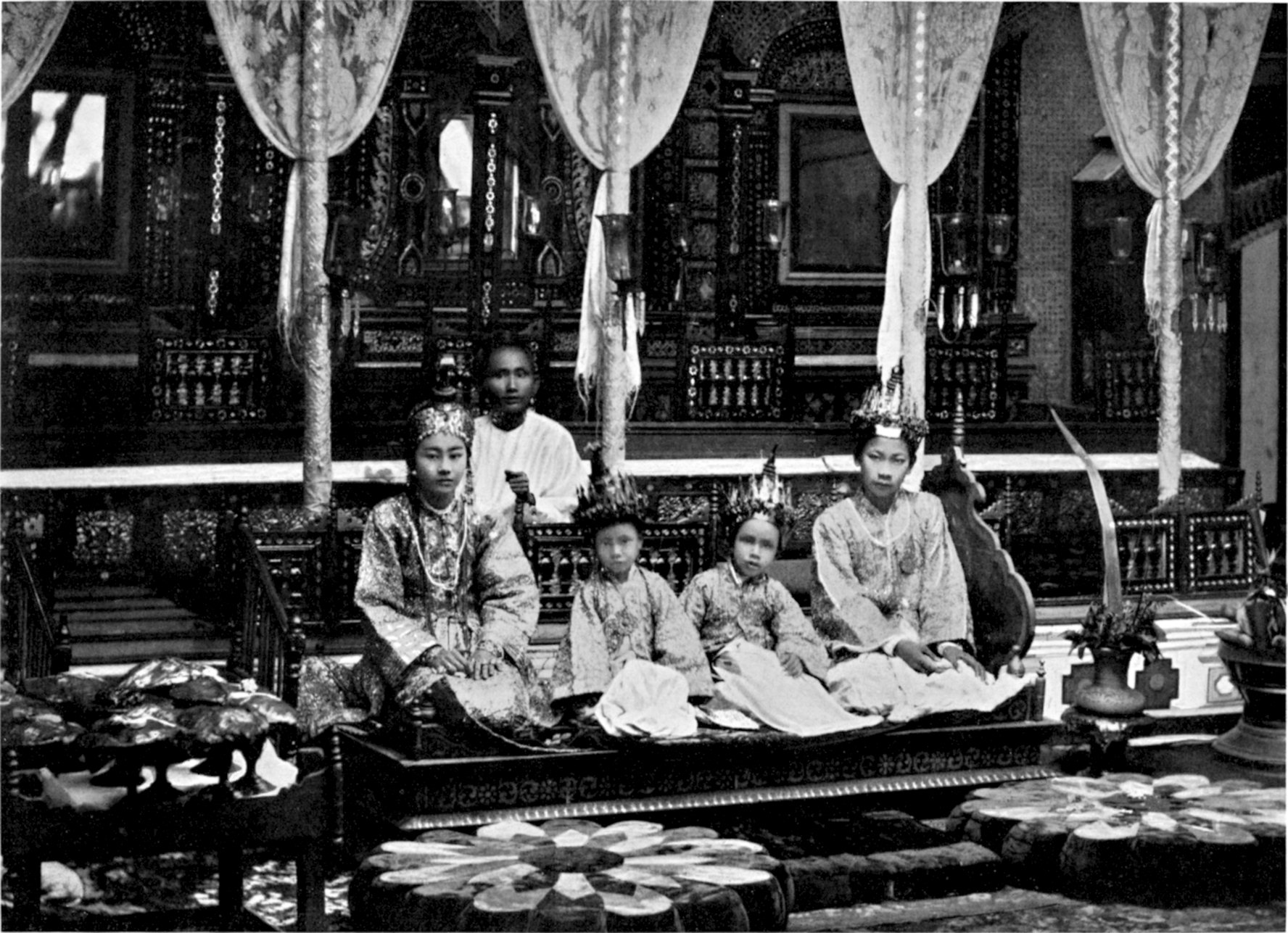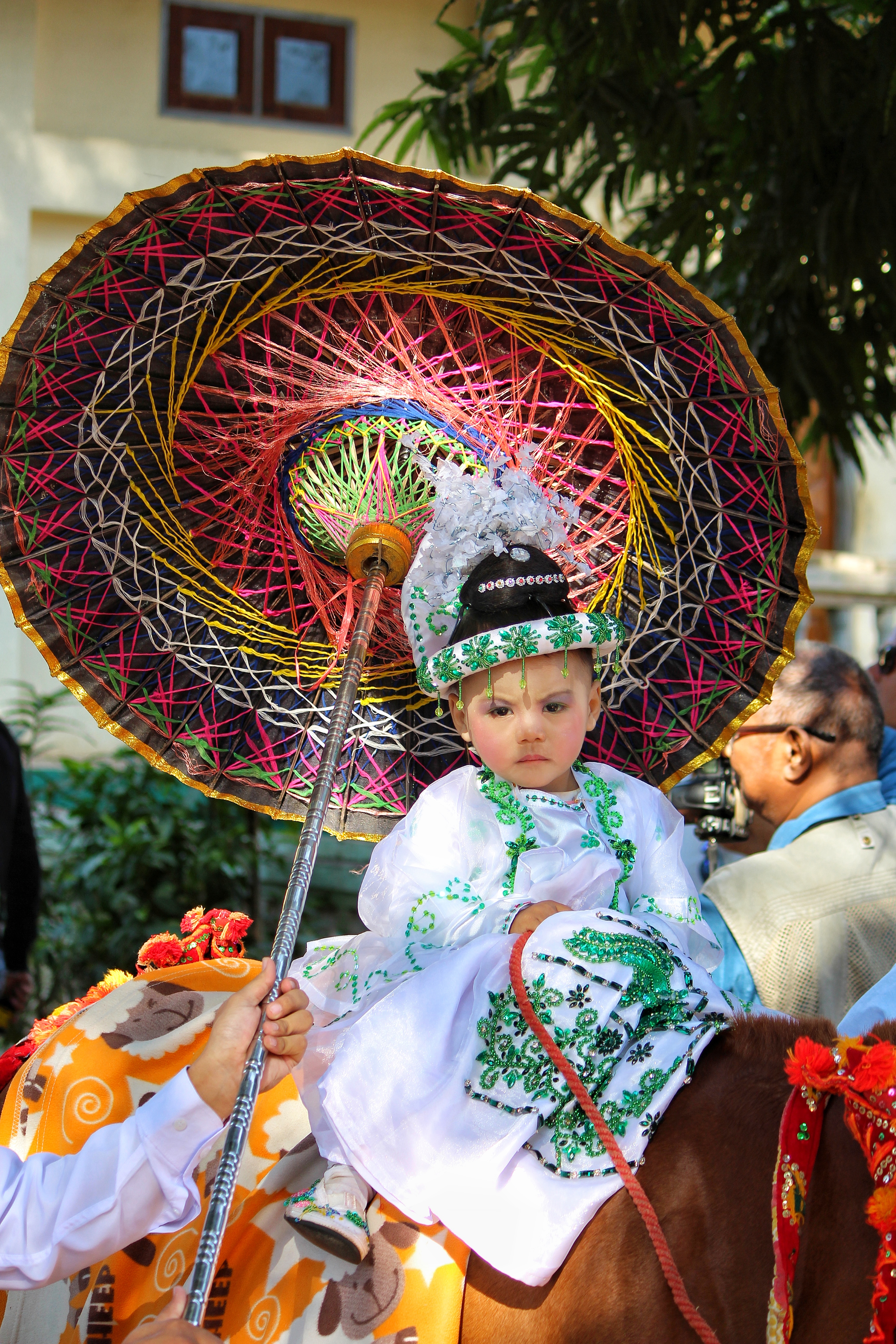Twelve Auspicious Rites on:
[Wikipedia]
[Google]
[Amazon]
 The Twelve Auspicious Rites (, , and ) are a series of worldly
The Twelve Auspicious Rites (, , and ) are a series of worldly
 # () – the successful delivery of a child
# () – the taking of refuge in the Three Jewels, worship of the Nandimukha nat, and paying of obeisance to a child's
# () – the successful delivery of a child
# () – the taking of refuge in the Three Jewels, worship of the Nandimukha nat, and paying of obeisance to a child's
 The Twelve Auspicious Rites (, , and ) are a series of worldly
The Twelve Auspicious Rites (, , and ) are a series of worldly rites of passage
A rite of passage is a ceremony or ritual of the passage which occurs when an individual leaves one group to enter another. It involves a significant change of status in society. In cultural anthropology the term is the Anglicisation of ''rite ...
recognized in traditional Burmese culture
The culture of Myanmar (Burma) ( ) has been heavily influenced by Buddhism. Owing to its history, Burmese culture has significant influence over neighboring countries such as Laos, Siam, Assam in India, and Xishuangbanna regions in China. It h ...
, particularly by the Bamar
The Bamar people (Burmese language, Burmese: ဗမာလူမျိုး, ''ba. ma lu myui:'' ) (formerly known as Burmese people or Burmans) are a Sino-Tibetan-speaking ethnic group native to Myanmar (formerly known as Burma). With an esti ...
and Rakhine peoples. These are distinct from the Thirty-eight Buddhist Beatitudes described in the Maṅgala Sutta.
In modern times, only four or five of these rites — the naming, first feeding, ear-boring, shinbyu
Shinbyu (; , also spelt shinpyu) is the Burmese term for a novitiate, novitiation ceremony (pabbajja) in the tradition of Theravada, Theravada Buddhism, referring to the celebrations marking the Śrāmaṇera, sāmaṇera (novitiate) monastic or ...
, and wedding rites — are commonly practiced in Myanmar, especially in urban cities. In pre-colonial Burma, Brahmins
Brahmin (; ) is a ''Varna (Hinduism), varna'' (theoretical social classes) within Hindu society. The other three varnas are the ''Kshatriya'' (rulers and warriors), ''Vaishya'' (traders, merchants, and farmers), and ''Shudra'' (labourers). Th ...
typically consecrated or led these rites. Today, masters of ceremony who specialize in abhisheka rituals, called ''beiktheik saya'' (ဘိသိက်ဆရာ), consecrate these rites. ''Beiktheik saya'' derive their skills from four Vedic scriptures, namely Sāmaveda, Yajurveda
The ''Yajurveda'' (, , from यजुस्, "worship", and वेद, "knowledge") is the Veda primarily of prose mantras for worship rituals.Michael Witzel (2003), "Vedas and Upaniṣads", in ''The Blackwell Companion to Hinduism'' (Edito ...
, Atharvaveda
The Atharvaveda or Atharva Veda (, , from ''wikt:अथर्वन्, अथर्वन्'', "priest" and ''wikt:वेद, वेद'', "knowledge") or is the "knowledge storehouse of ''wikt:अथर्वन्, atharvans'', the proced ...
, and Rigveda
The ''Rigveda'' or ''Rig Veda'' (, , from wikt:ऋच्, ऋच्, "praise" and wikt:वेद, वेद, "knowledge") is an ancient Indian Miscellany, collection of Vedic Sanskrit hymns (''sūktas''). It is one of the four sacred canoni ...
, in addition to Pali scriptures. The Twelve Auspicious Rites are believed to have originated in India, and were later spread throughout Southeast Asia by Buddhist missionaries. The rites are based on the teachings of the Buddha and are intended to promote moral and spiritual development, as well as to help individuals attain enlightenment.
List of rites
 # () – the successful delivery of a child
# () – the taking of refuge in the Three Jewels, worship of the Nandimukha nat, and paying of obeisance to a child's
# () – the successful delivery of a child
# () – the taking of refuge in the Three Jewels, worship of the Nandimukha nat, and paying of obeisance to a child's grandparents
Grandparents, individually known as grandmother and grandfather, or Grandma and Grandpa, are the parents of a person's father or mother – paternal or maternal. Every sexually reproducing living organism who is not a genetic chimera has a m ...
on the third day of a child's birthAlso called ().
# () – the shaving of a child's hair on the 7th day of a child's birth
# () – the first cradling of a child on an auspicious day"" (ဒေါလာ) is sometimes misspelt (ဒေါဠာ).
# () – the first ceremonial feeding of betel nut (flavored with catechu, licorice
Liquorice (Commonwealth English) or licorice (American English; see spelling differences; ) is the common name of ''Glycyrrhiza glabra'', a flowering plant of the bean family Fabaceae, from the root of which a sweet, aromatic flavouring is ...
, and fennel
Fennel (''Foeniculum vulgare'') is a flowering plant species in the carrot family. It is a hardy, perennial herb with yellow flowers and feathery leaves. It is indigenous to the shores of the Mediterranean but has become widely naturalized ...
seeds) to a child, on the 75th or 100th day of a child's birthAlso called (). Now sometimes replaced with (), the child's first ceremonial hair-washing as betel nut has fallen out of common use.
# () – the first revealing of a child to the sun and moon on the full moon day of the first, second, or third Burmese lunar months following a child's birth, comparable to the Hindu nishkramana ceremony
# () – the naming of a child based on a child's personalized horoscope (ဇာတာ) on the 100th day of a child's birth, similar to the Hindu namakarana ceremony
# () – the first ceremonial feeding of solid food (steamed rice) to a child, also commemorated with the donation of food alms
Alms (, ) are money, food, or other material goods donated to people living in poverty. Providing alms is often considered an act of Charity (practice), charity. The act of providing alms is called almsgiving.
Etymology
The word ''alms'' come ...
to Buddhist monks, on the 6th month of a child's birth,Also called (အာဟာရပရိဘောဂမင်္ဂလာ, ) or (, ). similar to the Hindu annaprashana ceremony
# () – the hair-knotting of a child, after the hair is shampooed with traditional herbal shampoo made with soap acacia and ''Grewia elastica'' ( Tayaw kinbun) on an auspicious day
# () – the ear-boring ceremony of a child an auspicious day, comparable to the Hindu karnavedha ceremony
# () – shinbyu
Shinbyu (; , also spelt shinpyu) is the Burmese term for a novitiate, novitiation ceremony (pabbajja) in the tradition of Theravada, Theravada Buddhism, referring to the celebrations marking the Śrāmaṇera, sāmaṇera (novitiate) monastic or ...
, the ordination of a child into the Buddhist monkhood as a samanera on an auspicious dayAlso called (သာမဏေရပဗ္ဗဇ္ဇမင်္ဂလာ).
# () – the wedding ceremony
A wedding is a ceremony in which two people are united in marriage. Wedding traditions and customs vary greatly between cultures, ethnicities, races, religions, denominations, countries, social classes, and sexual orientations. Most wed ...
on an auspicious dayTypically combined with the (ဝိဝါဟမင်္ဂလာ), the rite wherein the daughter is led to her family home before the wedding.
The scholar Aung Chein also identifies a number of auspicious rites outside of the twelve listed above:
# () – the first touching of the ground by a child
# () – the first parting of the child's hair by his or her mother
# () – the wearing of the makuṭa crown
# () – the housewarming ceremony
See also
* Awgatha *Buddhābhiṣeka
Buddhābhiseka (; ) refers to a broad range of Buddhist rituals used to consecrate cult image, images of the Buddha and other Buddhist figures, such as bodhisattvas.
Terms
Buddhābhiseka is known by a number of different terms in various languages ...
* Culture of Myanmar
* Mingalaba
* Shinbyu
Shinbyu (; , also spelt shinpyu) is the Burmese term for a novitiate, novitiation ceremony (pabbajja) in the tradition of Theravada, Theravada Buddhism, referring to the celebrations marking the Śrāmaṇera, sāmaṇera (novitiate) monastic or ...
* Weddings in Myanmar
Notes
References
{{Myanmar topics Culture of Myanmar Rites of passage